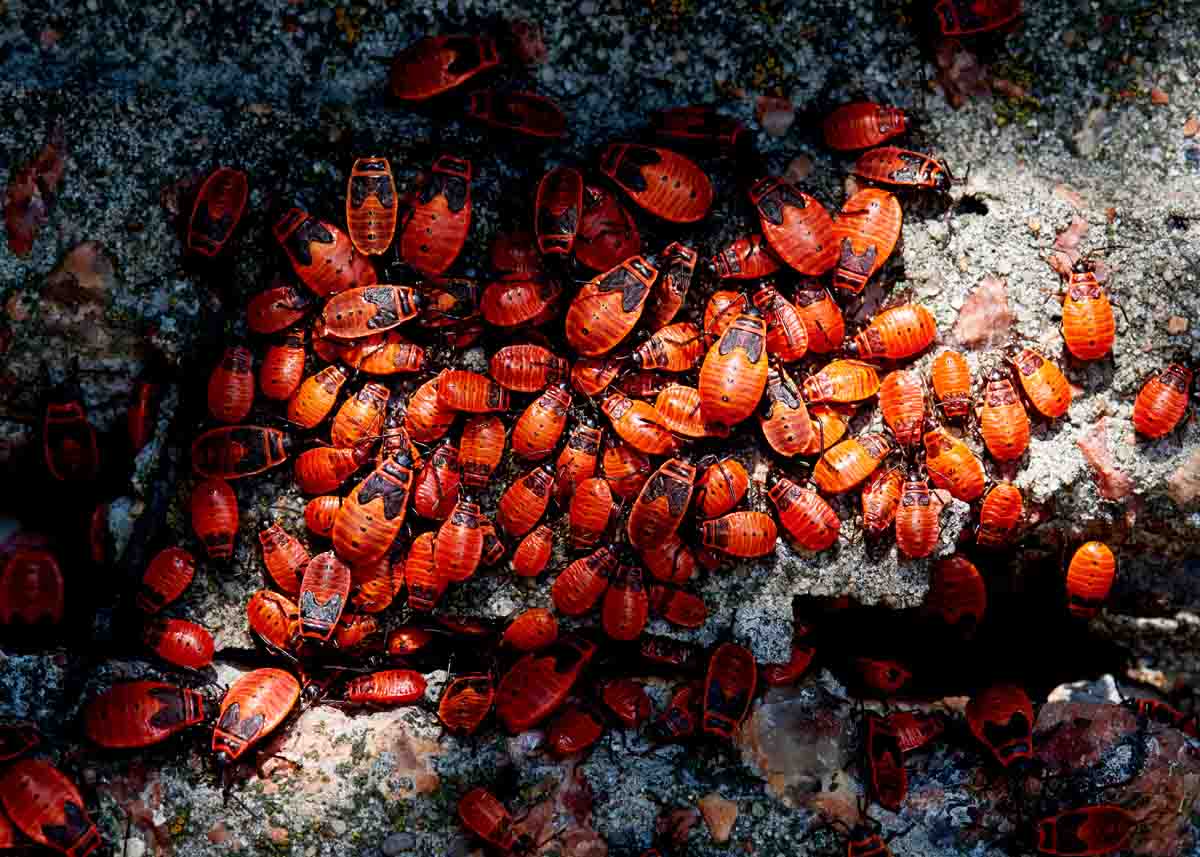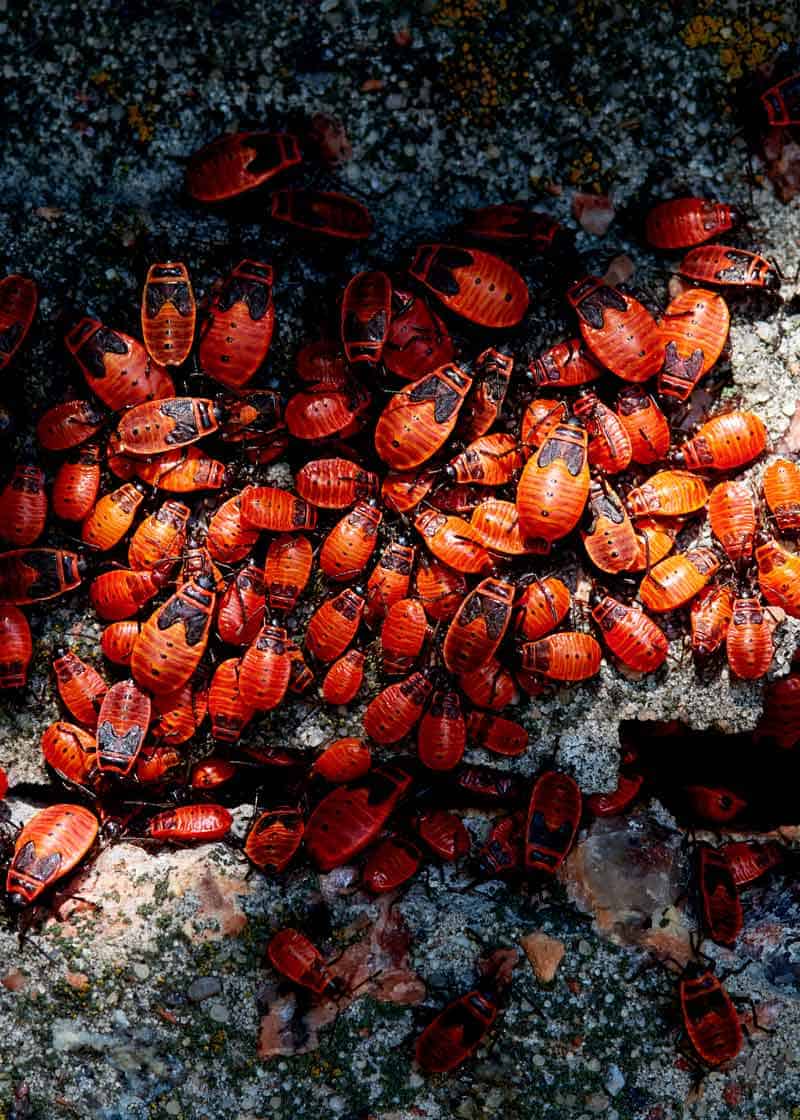If you see a squished bud, its insides won’t look red but green or yellowish. Do insects have blood? Instead of blood like humans, insects have a similar but distinctly different fluid.
Learn about bug blood and about the insect circulatory system.

Table of Contents
Do Insects Have Blood?
Bugs have a substance called hemolymph, which serves similar purposes to blood. It carries nutrients, hormones, amino acids, ions, lipids, and cells to insect organs.
The movement of that blood facilitates essential functions, including clotting, removing waste, killing parasites, hatching, growth, and molting.
Hemolymph is usually yellow, green, or clear.
How Does Insect Blood Compare to Human Blood?
While similar, insect blood differs from human blood.
- Hemolymph (insect blood) does not carry oxygen since it contains no hemoglobin. Instead, oxygen works differently. Like human blood, this substance does contain nutrients. It does perform more tasks than human blood.
- Human blood travels through the body via blood vessels and gets propelled by the heart. It contains several elements that benefit the body, including red blood cells, platelets, white blood cells, oxygen, and nutrients. Blood is red thanks to hemoglobin, which carries oxygen within the blood.
A major difference between the insect circulatory system and a vertebrate circulatory system is vertebrates circulate blood in part so that all parts of the body have oxygen, while insects gain oxygen differently.
Instead of lungs, most insects bring in oxygen through spiracles, openings that let oxygen get into the body.
More reading: Are Bugs and Insects the Same?
What Color is Insect Blood?
Instead of being red, insect hemolymph can be green, yellow, or clear.
Hemolymph also comes in direct contact with insect organs, while human blood only engages indirectly with blood vessels.
How Do Insect Circulatory Systems Work?
Insect circulatory systems are quite different than those of vertebrates.
- Humans (and other vertebrates) have a closed circulatory system with a heart that pumps blood through the body via veins and arteries. Lungs connect to the human heart, oxygenating the blood before it circulates through the body. Oxygen-depleted blood returns to the heart to get oxygen again.
- An insect’s circulatory system is open, meaning the hemolymph does not get contained within vessels. Instead, the essential fluid flows freely throughout the body, in direct contact with organs. The movement of the hemolymph occurs as a result of the heart movement, similar to the vertebrate circulatory system.
However, the hearts of insects are vastly different than vertebrate hearts. These hearts are usually segmented and spread throughout the body. When the heart contracts, it moves the hemolymph throughout the body.
Every insect is a little different regarding exact anatomy and heartbeats per minute. BPM can vary from 30 to 200, depending on the species. Environmental conditions like temperature and other stressors can affect heart rate.
Do you know? How many heart chambers does a cockroach have?

Keep reading: Guide to Bug Facts
Final Thoughts
While bugs do not have blood like vertebrates, they have their version called hemolymph. This essential substance facilitates many vital functions for insects of all kinds. Hemolymph is part of the unique insect circulatory system.
- About the Author
- Latest Posts
Bryan Haines is a co-founder and writer at The Buginator. And is working to make it the best resource for taking back the outdoors from biting, stinging pests.
He also blogs about travel at Storyteller.Travel and photography at Storyteller Tech. Bryan is a partner at Storyteller Media, a publishing company he runs with his wife, Dena.
